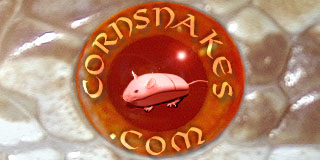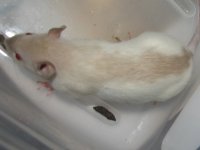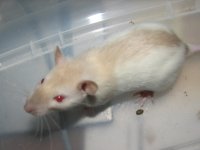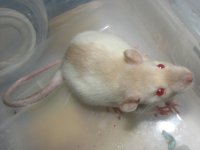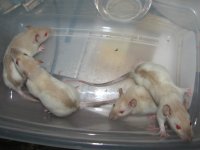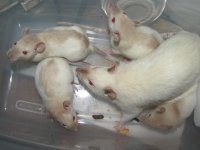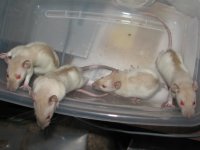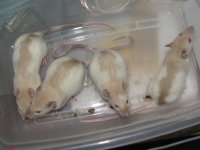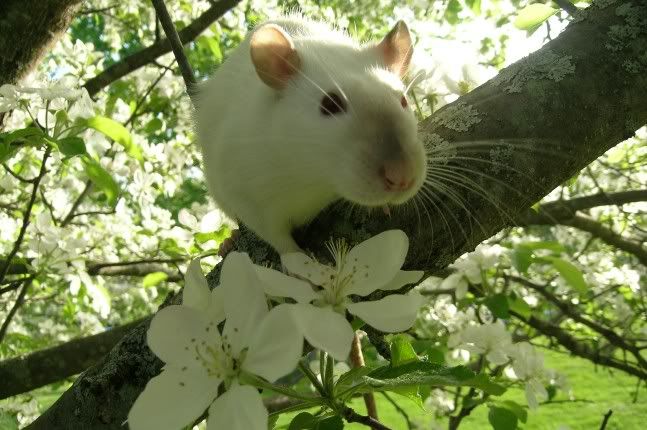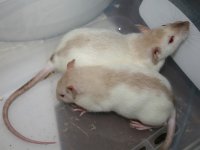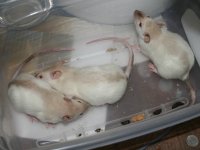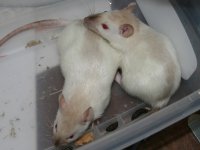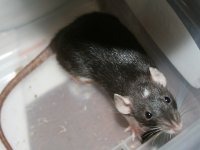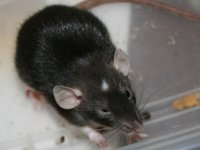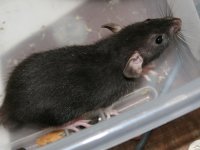Wow Im stupid lol. I was thinking of burmese rats, not himi. I could be wrong about the gene's of the himi, but I know those are not himis.
Himalayan
Albino gene and color point gene mask the color and markings of the rat making the rat white with light points
This rat-a/a c/ch or A/- c/ch
RSA"Body color to be white, free from stains and even throughout, with points to be as dark as possible. Eyes red. Note - Color areas: 1. face - not to extend upwards from eyes. 2. ears - not to extend downwards from the base. 3. forelegs - not to extend upwards beyond the elbows. 4. hind legs - not to extend upwards beyond the ankle. 5. tail - not to extend beyond the tail root. 6. feet - to be solid color throughout, devoid of any white."
AFRMA"Body color to be white, free from stains and even throughout. The points to be a rich dark sepia (as dark as possible). Eyes red. Note: Color should not extend past the following areas: 1. Face � not to extend upwards from the eyes. 2. Ears � not to extend downwards from the base. 3. Fore legs � not to extend upwards beyond the elbows. 4. Hind legs � not to extend upwards beyond the ankle. 5. Tail � not to extend more than half way up to the rump. 6. Feet � the color to be solid throughout, devoid of any white. (English N.F.R.S.) Himalayan to be shown only in AOCP class."
RatsPacNW"Himalayan will be of a white base with deep colored points on nose, ears, all four feet, tail base/tail. Faults: white on tips/points; too light of beige; missing points; white markings. Eye color is pink to pale ruby. Faults: white on tips/points; too light of beige (intensity of color); missing points; DQ white markings - blazes; stripes; white feet."
NFRS"Body colour to be white, free from stains and even throughout, with points a rich dark sepia. Eyes red. Note - Colour areas: 1. face - not to extend upwards from eyes. 2. ears - not to extend downwards from the base. 3. forelegs - not to extend upwards beyond the elbows. 4. hind legs - not to extend upwards beyond the ankle. 5. tail - not to extend beyond the tail root. 6. feet - to be solid colour throughout, devoid of any white."
